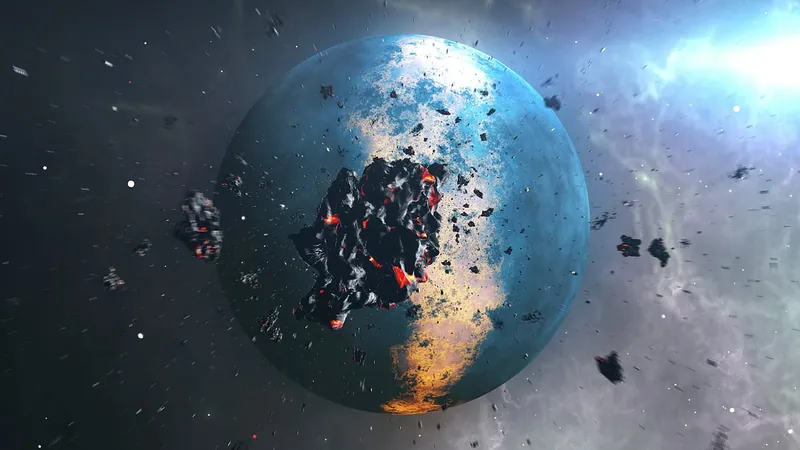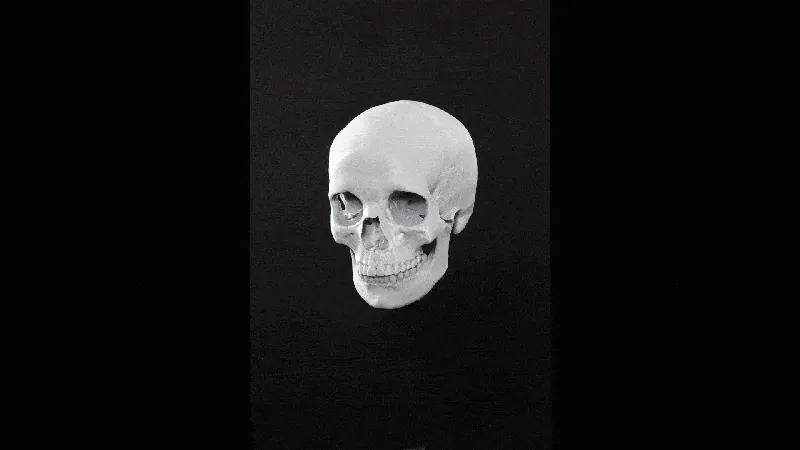
Breakthrough Equation Could Save Earth from Asteroid Catastrophe!
2024-11-26
Author: Chun
Introduction
Imagine the world facing an apocalypse akin to a blockbuster hit—asteroids colliding with Earth. This chilling scenario isn’t purely fictional; NASA estimates that the probability of such a catastrophic event occurring in any given year stands at approximately one in 300,000. However, there’s no need to panic just yet.
A Groundbreaking Equation
A glimmer of hope emerges from the University of Murcia, where Professor Oscar del Barco Novillo has devised a groundbreaking equation that helps scientists identify potentially dangerous asteroids hurtling towards our planet. By leveraging the gravitational bending of light, this innovative formula will allow astronomers to locate the exact positions of smaller celestial bodies within our solar system, including those residing in the Kuiper Belt and the far-reaching Oort Cloud.
Implications for Planetary Defense
This groundbreaking advancement has significant implications for planetary defense strategies, equipping scientists with advanced warning that could be decisive in preventing an asteroid collision. Having the ability to accurately calculate the orbit of a potentially hazardous asteroid can mean the difference between successful deflection and cataclysmic impact.
Understanding Gravitational Deflection
The key concept at play here is gravitational deflection, a phenomenon where light takes a curved path when it traverses strong gravitational fields, like those of our Sun and massive planets such as Jupiter. This phenomenon, postulated by Sir Isaac Newton in 1730 and later confirmed by Albert Einstein's general relativity in 1916, complicates the assessment of distant objects, including asteroids, as their perceived positions may shift due to light distortion.
Importance of Accurate Calculations
According to Professor Novillo, the reflected light from minor solar system objects is bent by the gravitational fields of larger bodies, necessitating adjustments in calculations of their actual motion. His findings, published in the Monthly Notices of the Royal Astronomical Society, propose that gravity can be modeled as a physical medium, akin to water, when calculating light bending, offering a more accurate estimation of celestial positions.
Test Results and Findings
Testing his equation against traditional Newtonian and Einsteinian models, Professor Novillo discovered discrepancies of up to 15.8% in the deflection angles for light beams originating from Mercury. This newfound precision is vital for tracking the orbits of smaller celestial bodies that pose a risk to Earth.
Current Efforts in Planetary Defense
Simultaneously, space agencies like NASA and the European Space Agency (ESA) are exploring methods to avert asteroid threats. The ESA's successful DART mission demonstrated the feasibility of altering an asteroid’s trajectory by crashing a small satellite into it. Initial results indicate that the orbit of the target asteroid, Dimorphos, had indeed been deflected due to this unprecedented impact. However, to maximize effectiveness, these missions require extensive planning and years of advance notice.
Implications for Astronomical Research
Beyond defending our planet, Novillo's equation has tantalizing implications for astronomical research, potentially enabling scientists to pinpoint the closest star to Earth, Proxima Centauri, located 4.25 light-years away. By refining our understanding of its position and the orbits of its three exoplanets, researchers could determine whether these planets reside within a habitable zone.
Mapping the Universe
Additionally, this revolutionary approach may assist in mapping the universe's most distant corners. Novillo points out that the locations of faraway galaxies, altered by gravitational lenses of massive clusters, could be defined with remarkable accuracy using his formula.
The Euclid Mission
As the ESA's Euclid mission prepares to survey billions of galaxies over the next six years, aiming to create a comprehensive 3D map of the universe, Professor Novillo's work promises to enhance the accuracy of this once-in-a-lifetime cosmic endeavor.
Conclusion
The age-old fears of asteroid threats may finally be countered with scientific breakthroughs, putting humanity on a path towards safety and new horizons in astronomical exploration. Will this equation be the key to humanity's survival from cosmic threats? Only time will tell!






 Brasil (PT)
Brasil (PT)
 Canada (EN)
Canada (EN)
 Chile (ES)
Chile (ES)
 España (ES)
España (ES)
 France (FR)
France (FR)
 Hong Kong (EN)
Hong Kong (EN)
 Italia (IT)
Italia (IT)
 日本 (JA)
日本 (JA)
 Magyarország (HU)
Magyarország (HU)
 Norge (NO)
Norge (NO)
 Polska (PL)
Polska (PL)
 Schweiz (DE)
Schweiz (DE)
 Singapore (EN)
Singapore (EN)
 Sverige (SV)
Sverige (SV)
 Suomi (FI)
Suomi (FI)
 Türkiye (TR)
Türkiye (TR)